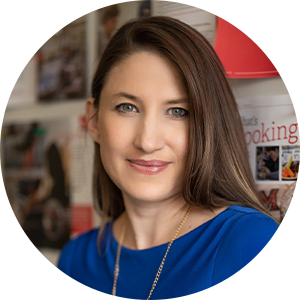Dear Jaime is Volt’s regular advice column. The questions in today’s post are samples of the kinds of questions that Jaime Hunt, our columnist and a higher ed marketing pro, gets in her inbox. To send her a question you’d like answered (anonymous or signed, you decide!), you can submit your question here or send an email to dearjaime@voltedu.com.
I’m struggling to attract graduate students. What can I do?
Graduate recruitment isn’t about selling degrees; it’s about creating experiences that inspire and engage.

Dear Jaime,
I work in the marketing department of a graduate program and I’m finding that attracting and converting potential graduate students is really challenging. What strategies should graduate higher education marketers like me consider to create a more engaging and relevant recruitment experience, increasing the likelihood of attracting and enrolling the right candidates? — Grad Marketer
Dear Grad Marketer,
Thanks to the country’s changing demographics (AKA, the enrollment cliff), many colleges are pinning their hopes on growing graduate enrollment, both on campus and online. This has made graduate recruiting hypercompetitive. To stand out, marketers need to create experiences that make prospective students feel valued, connected, and understood.
First, it’s essential to personalize the recruitment journey. Prospective graduate students typically seek programs that align with their professional goals, personal values, and career aspirations. Speaking directly to the individual needs and desires of students requires gathering and analyzing data; however, taking that step can be transformative for your efforts. It’s crucial to remember that personalization isn’t just about inserting a name into an email. It’s about curating interactions that speak to the unique journey of each prospective student.
Second, engagement is key. Create opportunities for prospective students to interact in meaningful ways, whether that is through live Q&A sessions with faculty or webinars that dive into the real-world applications of the degree. These types of experiences help potential students see the value proposition of your program. Don’t just focus on academics; be sure to showcase the community and the support systems that make your university stand out.
Third, storytelling should be at the heart of your strategy. I’ve said it before: Facts inform. Stories transform. Your marketing cannot and should not be just a recitation of facts. Certainly, students need to know about tuition and fees, curriculum requirements, and faculty expertise, but to really drive action, you need stories. Share the stories of current students and alumni who have had amazing success as a result of your program. Showcase the cool research projects that actually help make the world a better place. Let prospective students not just read but FEEL what it is like to be a student and graduate of your program. But remember, authenticity is crucial—these stories must genuinely reflect the experiences of your students and your alumni.
Finally, ensure that your recruitment experience is seamless and accessible. From the initial inquiry through matriculation, every touchpoint should be user-friendly and responsive. Ensure your website is easy to navigate. Enrollment steps should be clear and straightforward. Whenever you can, eliminate barriers. Friction in the enrollment process can be deadly and can drive a prospect away – even if your program is the right fit.
At the end of the day, graduate recruitment requires you to stand out among your competitors. Own what you excel at, create memorable experiences, and offer the most seamless, friction-free process possible. Those things combined with exceptional storytelling will give you a huge advantage in the marketplace.
Newsletter Sign up!
Stay current in digital strategy, brand amplification, design thinking and more.



